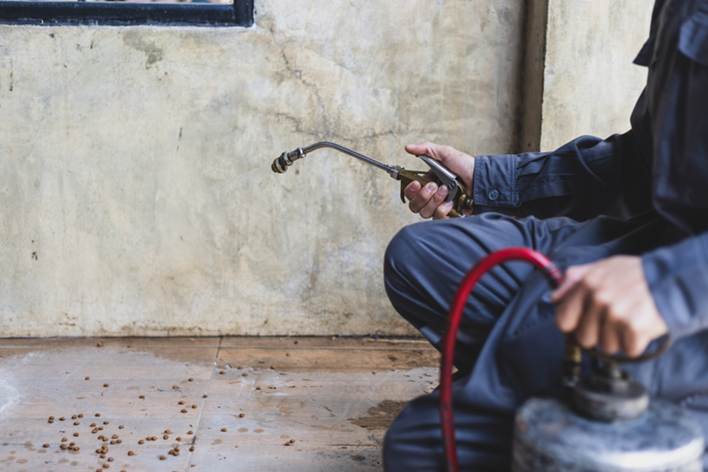
Chemical Exposure Injuries on Construction Sites
What’s Poisoning Workers Behind the Scenes?
If you work construction, you already know it’s tough out there. Long days. Heavy machinery. A million safety risks you can actually see. But it’s the ones you can’t like the toxic dust, invisible fumes, and chemicals in the air that can quietly do the most damage. You breathe them in, brush them off your skin, and keep moving. But your body remembers every bit of it. And it all adds up.
At Horn Wright, LLP, our construction accident attorneys understand how deeply these invisible threats can impact workers and their families. With years of experience handling complex cases, the firm helps clients pursue claims tied to hazardous materials on jobsites. New York enforces strong protections under its own Labor Law, while states like Maine, New Hampshire, and Vermont lean on OSHA standards. They all share a goal to make sure the people exposed to unsafe conditions can hold the right parties accountable.

Silent Killers on Jobsites: What’s Really in the Air?
You’re not going to see most of what’s hurting you. Toxic exposure isn’t dramatic. It creeps in. Day by day, shift by shift, while you’re just trying to get the job done. And by the time you feel it, the damage is often already there.
Your breathing gets rough. Your skin flares up. Or you feel like you’re running on empty, no matter how much rest you get. These illnesses don’t show up overnight and that’s what makes them hard to trace, and even harder to prove.
Here’s just a glimpse of what might be floating around your worksite:
- Asbestos: Lurking in old pipes, tiles, and insulation.
- Silica dust: Released when you’re cutting stone, brick, or concrete.
- Solvents: The fumes from these can hit your nervous system and liver.
- Welding fumes: A toxic cocktail of metal particles you shouldn’t breathe.
- Lead: Still found in older structures, especially in paint.
- Isocyanates: Common in spray foam and coatings, terrible for your lungs.
The worst part? These hazards are easy to ignore until the damage becomes impossible to undo. They’re a lot like wet floor slip and fall accidents: no warning signs, but serious consequences.
What’s Lurking Beneath the Dust on Aging Jobsites?
Not all jobsites are created equal. Older buildings carry more risk. You’re grinding, cutting, and tearing through decades of layered materials, many of them filled with toxins.
Asbestos doesn’t need much to become airborne. It sticks to your lungs and doesn’t leave. One deep breath during demolition can start a years-long path to a serious illness.
Solvents don’t always smell dangerous, but when you’re in a tight, closed space using adhesives or cleaners, those vapors hit your body hard.
Silica dust looks harmless until it’s in your lungs. Over time, it can lead to silicosis or worse. And none of this should be happening if your employer is following the law.
Under New York Labor Law § 241(6), construction workers are entitled to a workplace that meets specific safety standards during demolition, excavation, and other hazardous operations. This law empowers injured workers to take legal action when a general contractor or property owner fails to ensure those safety conditions are met.
These cases can also involve vicarious liability, where responsibility falls on a company or contractor even if a subcontractor caused the harm. You shouldn’t have to figure out who’s liable while trying to manage your health.
No Gear. No Warnings. Just Toxic Exposure at Work.
Safety sometimes gets buried under tight schedules, short crews, and long shifts. But none of that makes it okay for your boss to skip the basics.
You’ve got a legal right to protection. That means proper equipment. That means clear, honest training. And that means knowing exactly what chemicals you’re working around. According to the OSHA Hazard Communication Standard (29 C.F.R. § 1910.1200), your employer must make those things available.
And yet, here’s what happens way too often:
- Respirators that don’t work or none at all
- No air quality checks
- Safety data sheets that are missing or outdated
- Zero training on handling chemicals
- No access to rinse stations or cleanup areas
When employers skip critical safety steps, they expose their workers to unnecessary and preventable danger. These failures are violations of workplace safety laws that are meant to protect you on the job.
Just like what happens in defective stair accidents, it only takes one missed safeguard for someone to get seriously injured. And when the hazard involves toxic exposure, that harm can last a lifetime or even lead to fatal consequences.
When Dangerous Products Bypass Safety Checks
Sometimes the risk comes straight from the product in your hands. Labels don’t tell the truth. Instructions leave out critical steps. Or the formula itself includes chemicals known to cause harm. That’s legally unacceptable.
Manufacturers can be held responsible when they fail to warn or provide safer alternatives. That’s where product liability laws come in. And it’s something too few workers know they can fight.
If you’ve been exposed to a defective product, here’s what might apply:
- No warning labels at all
- Dangerous ingredients listed without any safety guidance
- Poor or unclear instructions
- Safer options existed but were ignored
Paint removers. Spray foams. Solvent-heavy cleaners. These are serious threats. When that exposure leads to death, surviving loved ones can pursue a toxic exposure wrongful death claim. That’s how real change can start.
When Your Illness Doesn’t Show Until Long After the Job Ends
You might clock out feeling fine. Years later? That cough doesn’t go away. Breathing’s harder. Fatigue doesn’t lift. Then comes the diagnosis and everything starts to make sense.
Toxic injuries don’t announce themselves right away. They show up slowly, after the exposure has done its damage. That’s what makes these cases such a battle.
You might be dealing with lung cancer, mesothelioma, chronic obstructive pulmonary disease (COPD), pulmonary fibrosis, nerve damage, memory issues, or neurological problems.
And by the time symptoms appear, the evidence may already be gone. Contractors go out of business. Buildings get demolished. Records vanish.
Putting together a strong claim takes time and serious work. You’ll need detailed medical records, proof of exposure, expert opinions, and a deep understanding of the legal framework. Even when evidence seems scattered or time has passed, experienced legal guidance can help you gather the right pieces and build a case that stands up in court.
Your Health Isn’t Replaceable: Protect It Before It’s Too Late
Chemical exposure affects more than your job. It touches every part of your life. If you’re starting to see signs and think it’s linked to work you did, now’s the time to take action. The longer you wait, the harder it gets to prove. Reach out to Horn Wright, LLP, today. Talk to construction accident attorneys who understand what you’ve been through and how to fight for what you deserve.

What Sets Us Apart From The Rest?
Horn Wright, LLP is here to help you get the results you need with a team you can trust.
-
Client-Focused ApproachWe’re a client-centered, results-oriented firm. When you work with us, you can have confidence we’ll put your best interests at the forefront of your case – it’s that simple.
-
Creative & Innovative Solutions
No two cases are the same, and neither are their solutions. Our attorneys provide creative points of view to yield exemplary results.
-
Experienced Attorneys
We have a team of trusted and respected attorneys to ensure your case is matched with the best attorney possible.
-
Driven By Justice
The core of our legal practice is our commitment to obtaining justice for those who have been wronged and need a powerful voice.

